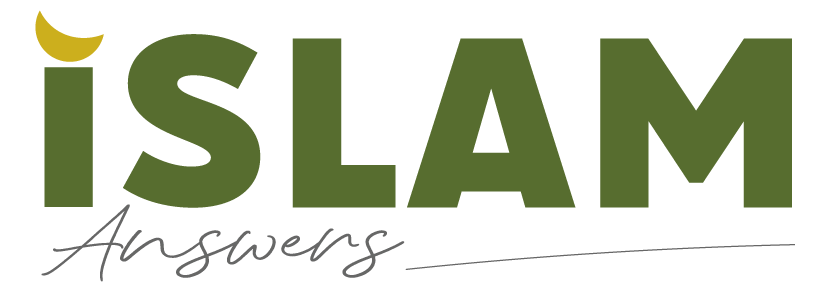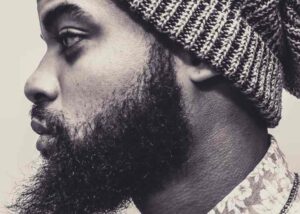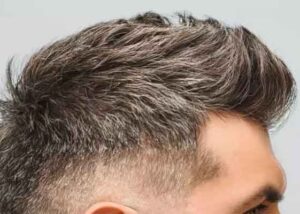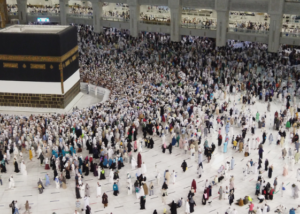Is it permissible for women to remove hair / pluck from the eyebrows?
Quran
Hadith
Islamic Text
It is permitted if they are excessive.
عَنِ ابْنِ مَسْعُودٍ رَضِيَ اللَّهُ عَنْهُ قَالَ: «لَعَنَ اللَّهُ الوَاشِمَاتِ وَالمُسْتَوْشِمَاتِ، وَالمُتَنَمِّصَاتِ وَالمُتَفَلِّجَاتِ لِلْحُسْنِ، المُغَيِّرَاتِ خَلْقَ اللَّهِ» مَا لِي لاَ أَلْعَنُ مَنْ لَعَنَهُ رَسُولُ اللَّهِ صَلَّى اللهُ عَلَيْهِ وَسَلَّمَ، وَهُوَ فِي كِتَابِ اللَّهِ
Ibn Masood said, ‘Allah (Most High) has cursed women who tattoo others and those who get themselves tattooed, and women who have facial hair removed, and those who fashion a space between their teeth for beautification, women who seek to change the creation of Allah (Most High). Why then should I not curse those whom the Prophet ﷺ has cursed, and it is in the book of Allah (Most High). (Sahih al-Bukhari, 5943).
The Hadith above is often quoted to prove the prohibition of women plucking the eyebrows. However, it is important to note that the word ‘Namisah’ is differed over. Some scholars said it refers to women who pluck hair from the face generally, and is not specific to the eyebrows. Others felt it was referring to the eyebrows specifically.
Many Hanafi scholars understood the Hadith to refer to facial hair generally and not the eyebrows specifically. Therefore, with these scholars the ruling is more lenient because of the necessity of women removing facial hair at times (e.g. hair above the lip). Consequently, they did not believe the Hadith to be referring to a strict and absolute prohibition. These scholars felt the prohibition in the Hadith is limited to that which is done without need, is excessive, or done with an intention to cause Fitnah.
النَّامِصَةُ الَّتِي تَنْتِفُ الشَّعْرَ مِنْ الْوَجْهِ وَالْمُتَنَمِّصَةُ الَّتِي يُفْعَلُ بِهَا ذَلِكَ
وَلَعَلَّهُ مَحْمُولٌ عَلَى مَا إذَا فَعَلَتْهُ لِتَتَزَيَّنَ لِلْأَجَانِبِ، وَإِلَّا فَلَوْ كَانَ فِي وَجْهِهَا شَعْرٌ يَنْفِرُ زَوْجُهَا عَنْهَا بِسَبَبِهِ، فَفِي تَحْرِيمِ إزَالَتِهِ بُعْدٌ، لِأَنَّ الزِّينَةَ لِلنِّسَاءِ مَطْلُوبَةٌ لِلتَّحْسِينِ، إلَّا أَنْ يُحْمَلَ عَلَى مَا لَا ضَرُورَةَ إلَيْهِ لِمَا فِي نَتْفِهِ بِالْمِنْمَاصِ مِنْ الْإِيذَاءِ. وَفِي تَبْيِينِ الْمَحَارِمِ إزَالَةُ الشَّعْرِ مِنْ الْوَجْهِ حَرَامٌ إلَّا إذَا نَبَتَ لِلْمَرْأَةِ لِحْيَةٌ أَوْ شَوَارِبُ فَلَا تَحْرُمُ إزَالَتُهُ بَلْ تُسْتَحَبُّ اهـ، وَفِي التَّتَارْخَانِيَّة عَنْ الْمُضْمَرَاتِ: وَلَا بَأْسَ بِأَخْذِ الْحَاجِبَيْنِ وَشَعْرِ وَجْهِهِ مَا لَمْ يُشْبِهْ الْمُخَنَّثَ اهـ وَمِثْلُهُ فِي الْمُجْتَبَى تَأَمَّلْ (رد المحتار على الدر المختار)
Imam al-Haskafi: The ‘Namisah’ is the one who plucks hair from the face and the ‘Mutanamisah’ is the one having it plucked.
Imam Ibn Abideen: It (the prohibition) may be referring to a woman who does it to beautify herself for strangers. Otherwise (it is permitted) because if there is hair on her face then her husband will be repelled from her, as a result of it (the facial hair), so it is farfetched to consider it prohibited (to pluck facial hair). Adornment is required of women to beautify themselves.
Unless we say the prohibition relates to that which is not needed, since plucking with a pincer is harmful. In Tabyeen al-Mahaarim he said, removing hair from the face is Haram (prohibited) unless a woman has a beard or moustache, in which case it is not Haram, rather removing it is recommended. In al-Tataarkhaniyah he narrated from al-Mudmaraat, and there is no harm in him plucking the eyebrows or his facial hair as long as he does not resemble effeminate people. And al-Mujtaba has something similar, so reflect. (Radd al-Muhtaar).
We see in the Nass (text) above that Imams al-Haskafi and Ibn Abideen understood ‘Namisah’ to refer to facial hair. So Ibn Abideen explained how the prohibition must be specific and cannot be general, since Muslim women are required to remove facial hair at times. Not doing so would cause issue in a marriage as mentioned by Imam Ibn Abideen. As well as this it would contradict the well established Islamic principle of women not resembling men.
However, some authoritative Hanafi scholars understood the word ‘Namsiah’ to be specific to the eyebrows. Such scholars may have had a stricter Fatwa regarding the issue of plucking eyebrows, since the objection of removing facial hair being required at times would not apply to their explanation.
وَالنَّامِصَةُ هِيَ الَّتِي تُنْقِصُ الْحَاجِبَ لِتُزَيِّنَهُ، وَالْمُتَنَمِّصَةُ هِيَ الَّتِي يُفْعَلُ بِهَا ذَلِكَ.(البحر الرائق شرح كنز الدقائق)
And the ‘Namisah’ is a woman who reduces the eyebrows in order to adorn. The ‘Mutanamisah’ is the one for whom this is done. (Imam Ibn Nujaym, al-Bahr al-Raiq).
In the text above Imam Ibn Nujaym did explain ‘Namisah’ as referring to the eyebrows, however he did not go into detail regarding the prohibition.
وَفِي الْحَدِيثِ «لَعَنَ اللَّهُ النَّامِصَةَ وَالْمُتَنَمِّصَةَ» أَيْضًا وَالنَّامِصَةُ هِيَ الَّتِي تَنْقُشُ الْحَاجِبَ لِتُرِقَّهُ، وَالْمُتَنَمِّصَةُ الَّتِي يُفْعَلُ بِهَا ذَلِكَ (فتح القدير)
And it is mentioned in Hadith, ‘Allah (Most High) curses the ‘Namisah’ and the ‘Mutanamisah.’ The ‘Namisah’ is a woman who takes from the eyebrows in order to make them fine. The ‘Mutanamisah’ is the one for whom this is done. (Imam Ibn al-Humaam, Fath al-Qadeer).
Here Imam Ibn al-Humaam also explains ‘Namisah’ as referring to the eyebrows specifically, however he explains the prohibition as relating to thinning the eyebrows, not an absolute prohibition. So he does not necessarily go against other Hanafi scholars who said it is permitted when there is a need.
In any case such an explanation of the word ‘Namisah’ seems to be a minority opinion. Most have explained it as referring to facial hair generally, therefore the explanation of Imam Ibn Abideen is upheld.
وَالنَّامِصَةُ: الَّتِي تَنْتِفُ الشَّعْرَ مِنَ الْوَجْهِ؛ وَالْمُتَنَمِّصَةُ: الَّتِي يُفْعَلُ بِهَا ذَلِكَ. (الاختيار لتعليل المختار)
The ‘Namisah’ is the one who plucks hair from the face, and the ‘Mutanamisah’ is the one having it plucked. (Imam al-Mowsili, al-Ikhtiyaar).
وَالْمُتَنَمِّصَاتِ: بِتَشْدِيدِ الْمِيمِ الْمَكْسُورَةِ هِيَ الَّتِي تَطْلُبُ إِزَالَةَ الشَّعْرِ مِنَ الْوَجْهِ (مرقاة المفاتيح شرح مشكاة المصابيح)
The ’Mutanamisaat’ with a Shaddah on the Meem, which has a Kasrah, refers to a woman seeking to have hair removed from the face. (Imam Ali al-Qari, Mirqaat al-Mafateeh).
وَهُوَ إِزَالَة الشّعْر من الْوَجْه (عمدة القاري)
And it (al-Tanamus) is the removal of hair from the face. (Imam al-Ayni, Umdatu al-Qari).
It is worth noting that the Hanafi books are even clearer with regards to the permissibility of men plucking eyebrows (see Radd al-Muhtar above). Therefore it may be argued that since women have far more need and religious encouragement to remove facial hair than men, it stands to reason to consider it even more acceptable for women. Thus, if it is permitted for men then it must be permissible for women too. (see the link below for more details).
In conclusion, it is clear that the strongest opinion in the Hanafi Madhab does not place an absolute prohibition on plucking the eyebrows, rather it permits it when there is a need. Many contemporary Hanafi scholars explain this as it being permitted if the hair is excessive and would look unappealing or even masculine if left unattended. But they do warn women not to be excessive as they may fall into the prohibition.
And Allah (Most High) Knows best.
– Answered by Shaykh Noorud-deen (08.05.2021)
See also:
Can men pluck facial hair or eyebrows?
Hadith about plucking the eyebrows
See also (video):

